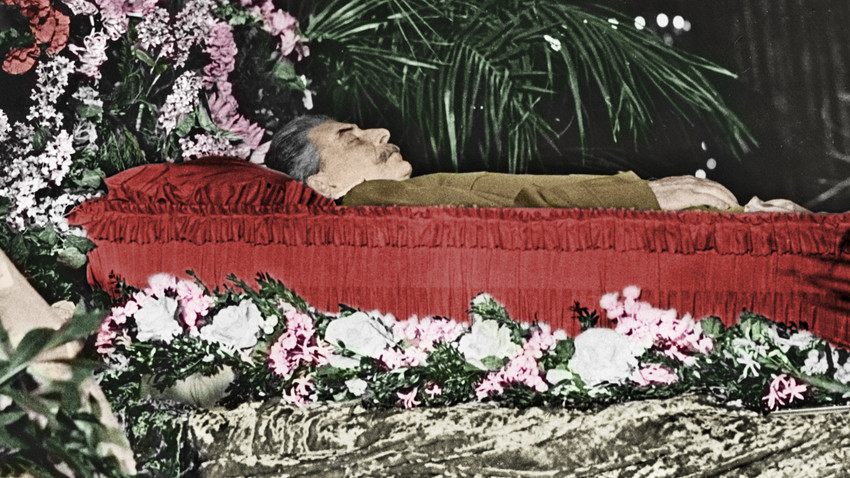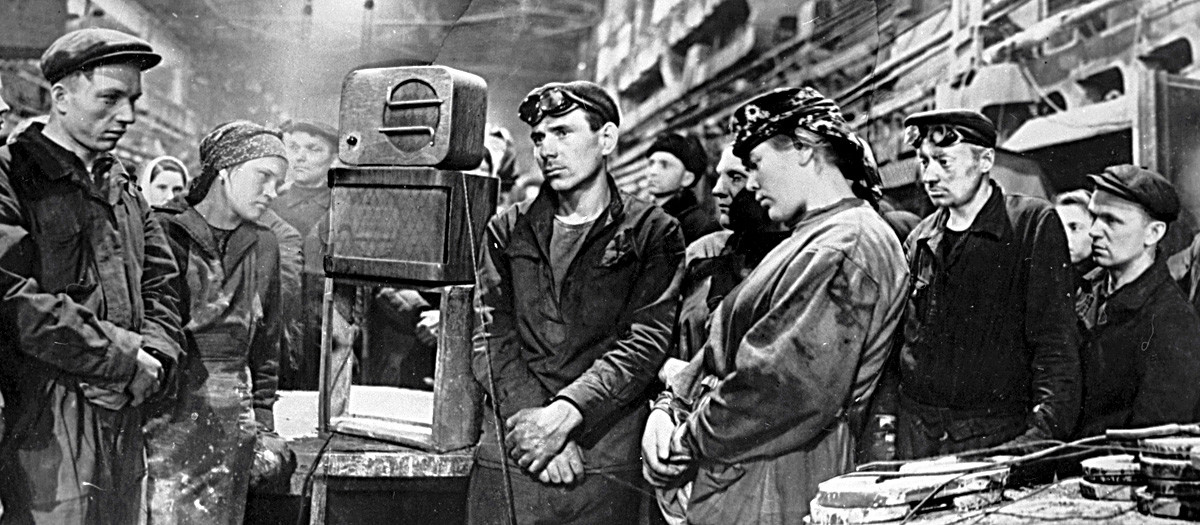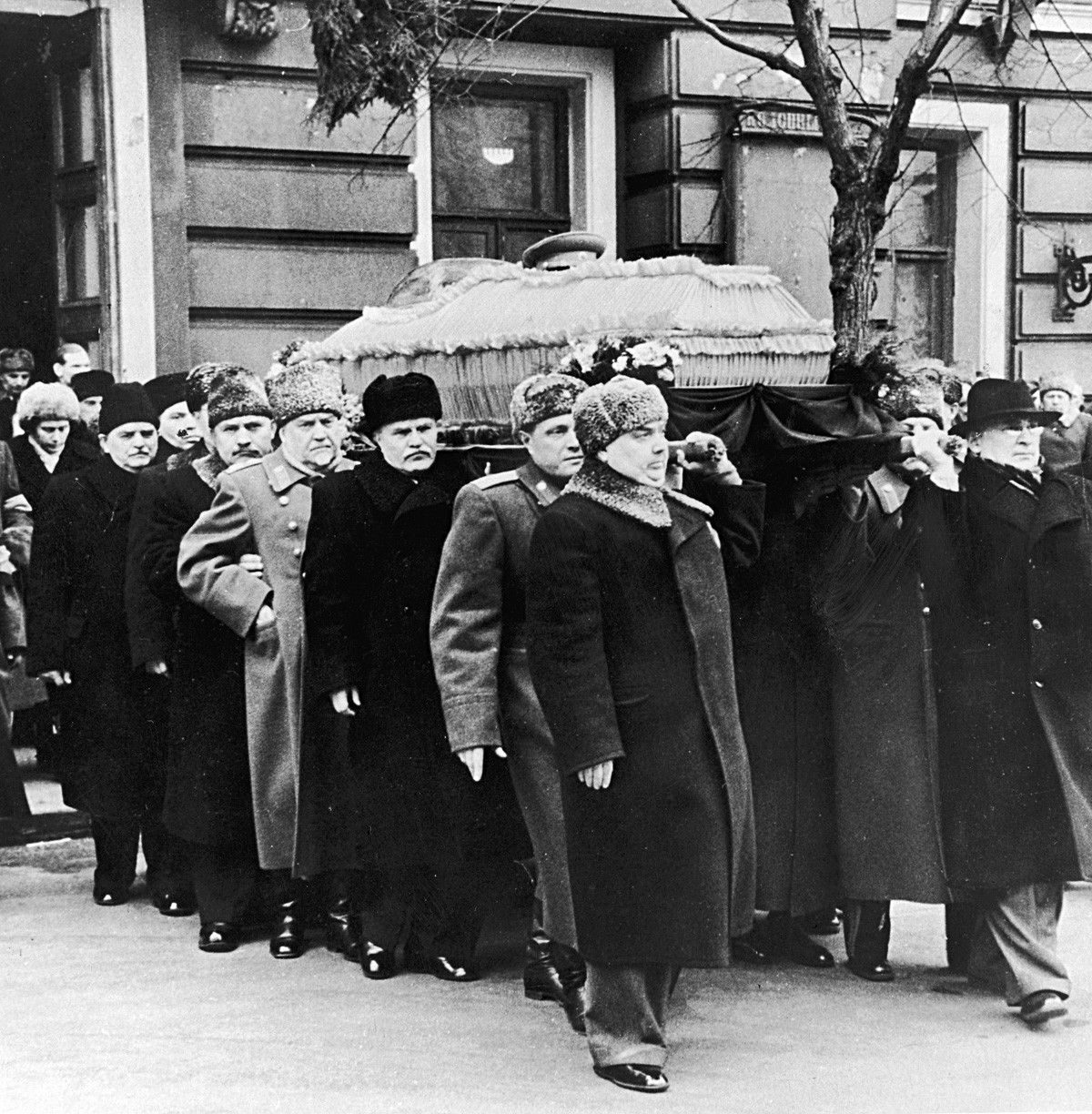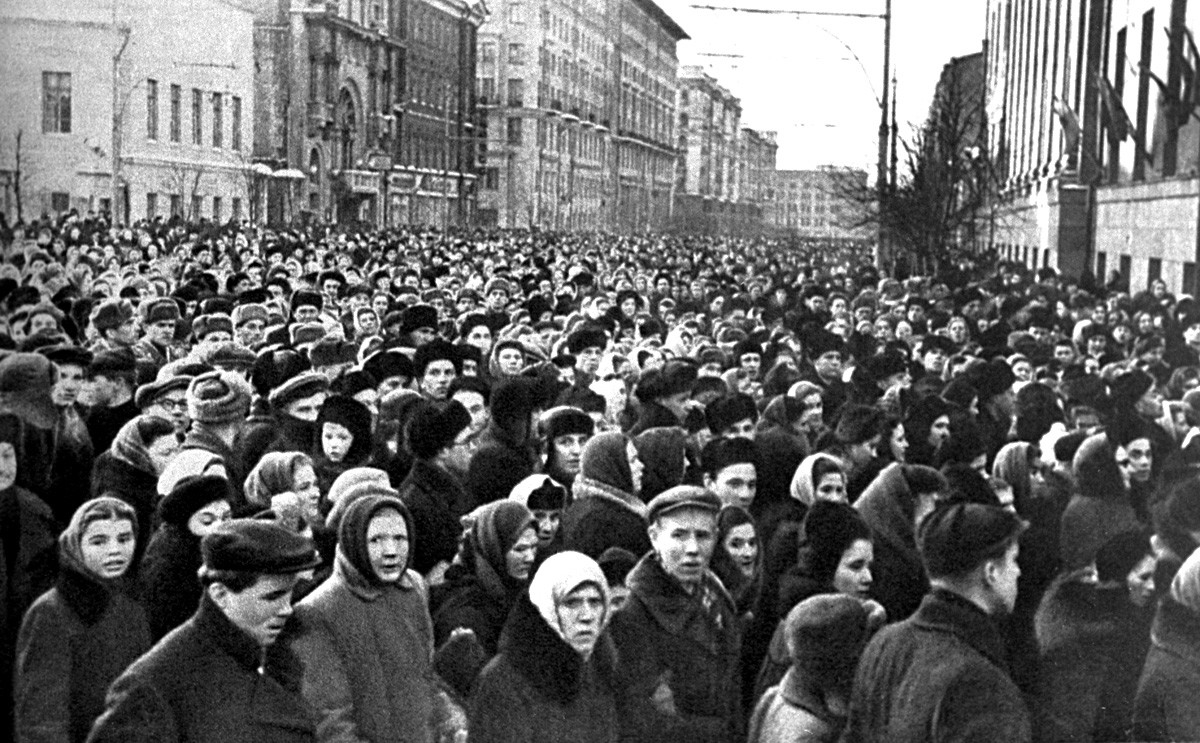
Stalin's body in Mausoleum, 1953.
Getty ImagesStalin died of a stroke on March 5, 1953 in his country residence. Next day the Soviet Union heard the official announcement on the radio. The journalist said, his voice full of grief: “The heart of the collaborator and follower of the genius of Lenin's work, the wise leader and teacher of the Communist Party and of the Soviet people, stopped beating.”
For most Soviet people, it was like hearing about the death of God. Whether they loved or hated the almighty Stalin, they lived under his will for the previous 30 years. Several decades of rapid industrialization had turned a predominantly rural country into an economic giant; but there was also the murderous purges and famines, and a horrifying war against Nazi Germany, and its glorious victory – all this happened on Stalin’s watch. And now he was gone.

The Moscow-based Dynamo engineering works personnel listen to the radio as Joseph Stalin's death is announced.
SputnikAnastasia Baranovich-Polivanova, who was a student in 1953, recalled: “In our univer,sity I saw a party official weep so hard that she couldn’t even stand… and our Marxism teacher, a very nice person, actually, said: ‘If one would ask what’s most important for me… I’d say my daughter, of course. But if I could give her away to resurrect him I would do that.’”
Stalin’s personality cult was so strong that even those related to victims of his repressions mourned him. “My mom told me that they all cried when they heard about Stalin’s death, and she, a child, also cried, because of senselessness, powerlessness, because life lost its meaning… My grandma cried as well, which sounds surprising to

The coffin of Soviet political leader Joseph Stalin (1879 - 1953) is carried by his closest officials.
Getty Images“We were in Siberia, near Norilsk (2,800 km northeast of Moscow), digging a foundation pit,” said Anatoly Bakanichev, who was imprisoned in a camp after being a POW in Germany. “I was slogging the permafrost with a pickaxe when I heard my partner from above: ‘Tolya, get out here, the bastard is dead!’ Every camp inmate was joyful, you could notice it. Someone even was told to shout ‘hooray!’ after the news.”

Moscow streets during Joseph Stalin's funeral.
SputnikWhile prisoners in Siberia were silently cheering, in
The viewing line that stretched through the center of Moscow was clearly marked and guarded by the police and army, which used vehicles to maintain order (as they hoped). Then, on March 6, 1953, people came in large crowds to Trubnaya Square from the narrow Rozhdestvensky Boulevard, and found the square partly blocked with cordons of trucks and troops on horseback.
There wasn’t enough room for people to pass, yet they couldn’t go back as the others were still coming. “The crowd got more tightly packed and you couldn’t move, you just had to go with it, unable to escape the flow,” said Yelena Zaks, one of the thousands of people caught in the crowd. She was lucky enough – when she was passing by the guarded fence, one of the soldiers standing up above grabbed her and took her out of the crowd, possibly saving her life.
Many others were less fortunate. “The whole crowd was moaning… some people died, pressed hard against lampposts and trucks… My grandfather, who was there, told me that at some point he heard a strange chomp under his legs; he looked down and saw human guts,” tells TV journalist Anton Khrekov. The next morning many people had to look for their relatives and friends in hospitals and morgues.
Today, 66 years later, it’s still unclear how many people died that day: estimates differ from several dozens to several thousands, and official statistics remain classified. Yet the one thing is clear: even in death, Stalin’s power loomed large over the country, and carnage literally followed him to the grave
If using any of Russia Beyond's content, partly or in full, always provide an active hyperlink to the original material.
Subscribe
to our newsletter!
Get the week's best stories straight to your inbox